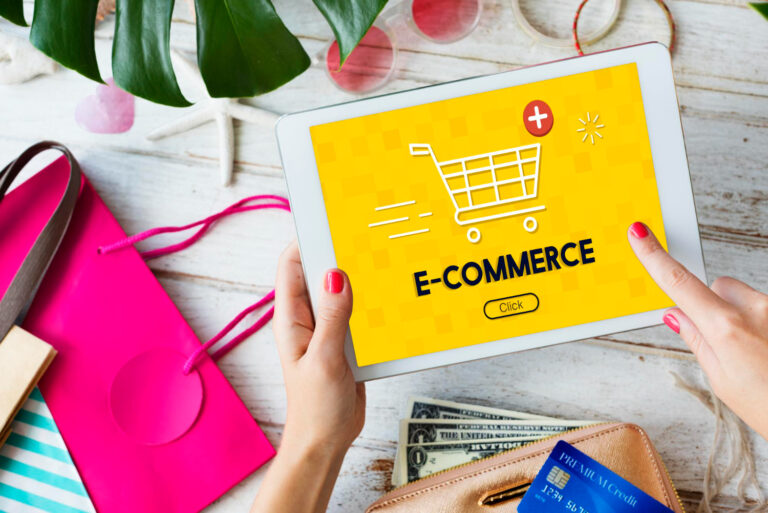- Amelia Sabestine
- 0 Comments
- 1154 Views
Ecommerce conversion rates are critical to the success of any online business. It is the proportion of website visitors who finish an intended task, like making a purchase or completing a form. A greater conversion rate equals more sales and money, which is what every ecommerce company strives for.
However, it might be challenging to start because there are so many factors that affect conversion rates. The basics of e-commerce conversion rates, along with some data and pointers for improving rankings, will all be covered in this article. Let’s get going!
What Does Conversion Rate Mean?
A website’s conversion rate is the proportion of all website visits that end in a conversion activity. It is calculated using the following simple formula and is presented as a percentage:
Therefore, if your conversion is newsletter subscriptions and you receive 1,000 website visits and 100 newsletter subscribers in a given period, your conversion rate is (100 / 1,000) = 0.10, or 10%.
What Is Conversion Rate Ecommerce?
The ratio of customers who made purchases from your web-based shop to the total number of persons who visited your website is known as your e-commerce conversion rate. If you just conduct e-commerce, this figure directly connects to the overall number of purchases, sales income, and profit.
Ecommerce Conversion Rate Basics
How Are Ecommerce Conversion Rates Measured?
Any website analytics tool can be used to determine a website’s conversion rate. The most popular and exclusive website is Google Analytics. There are numerous methods to track it, though. Here are some more of the most typical ones:
- Segment. This compiles information from several sources, including Facebook/Instagram Ads.
- Heap. Combines data from several sources similarly to Segment and offers greater event monitoring customization than Google Analytics.
- Triple Whale. This analytics platform keeps track of a customer’s interactions with a brand across all touchpoints, including social media and online searches.
- HotJar. The capabilities of click, cursor movement, and scroll-depth mapping are included as part of this heat mapping tool. Each heat map experiment will enable you to see where customers click, move, or scroll on the website, allowing you to gain insight into their behavior patterns based on your plan.
- Quantcast Measure. A tag-based analytics tool that bridges the gap between Facebook Analytics and Google Analytics by measuring user site usage and offering sophisticated demographic information on a per-click basis.
The majority of analytics solutions function in the same way: they give you a little piece of code to add to your website, and that code translates when a session begins and ends and when an order takes place (with help from a marketer or developer).
Your budget, acquisition channels, and ad spend level all play a role in determining the best analytics solution for you (high ad spend necessitates more advanced analytics and attribution tools).
Average Ecommerce Conversion Rates For Websites
Conversion rates for e-commerce websites should on average range from 1% to 4%.
- Global ecommerce website conversion rate: 2.58%
- US ecommerce website conversion rate: 2.57%
These numbers are slightly below the 3.65% global average. This is due to the fact that e-commerce website performance varies greatly depending on the industry, nature of the business, target market, pricing, and other factors.
While understanding average ecommerce conversion rates for your industry is critical, you should not take overall statistics for granted, especially when assessing your firm against others in the same industry.
What Is A Good Conversion Rate for Ecommerce?
Online sales conversion rates typically range between 2.5 and 3%. Even if you take all of the necessary measures, you should be winning the sale approximately 2-3% of the time. An average website conversion rate of at least 3% should be the goal of your online store. When you succeed in doing that, you can graduate with more sophisticated conversion rate strategies.
Importance Of Conversion Rate
Ecommerce conversion rate can reveal a lot about the state of your business, your marketing strategies, and your success as a whole. Each business will have different good ecommerce conversion rates, however, a good rate will increase overall revenue. Knowing your ecommerce conversion rate can be beneficial to you in:
- Determining the return on investment (ROI) of various marketing tactics
- Looking at the channels that are producing the greatest income.
- Finding out how your company is doing overall.
If internet sales are your principal source of income, this will tell where your target market is finding you. Finding the cause of a low conversion rate, on the contrary, can help you produce more sales if you’re not making as much money as you could.
What Is Conversion Rate Optimization Ecommerce (CRO)?
A digital marketing strategy called ecommerce CRO tries to increase the volume of sales you generate through e-commerce platforms. For instance, you may alter your Amazon platform to increase sales if you mainly sell on Amazon and have a low conversion rate. Basic ecommerce CRO steps include:
- Examining user activity to determine what is being done on your website
- Looking out for problems when they check out
- Asking visitors about their experience and how they reached your website
All of these actions, along with others, can aid in increasing sales.
How To Improve Ecommerce Conversion Rate: Proven Strategies And Tips
Are you searching “how to increase conversion rate ecommerce?” When it comes to increasing the conversion rate in ecommerce, there are several proven strategies and tips that can be implemented. Let’s have a look at strategies to increase online store conversion rate:
Make Up A Website Copy
Once a lead visits your website, your website copy can aid in the conversion of that lead. People won’t return if your site has types, unclear material, or not sufficient details.
Suppose someone locates your shoe company using a keyword search. But once they get to your website, they are unable to locate any details regarding your inventory, shipping, or sizing policies. They won’t want to purchase from you and might think your business is spam.
You may prevent this problem by creating informative category pages, product descriptions, and FAQs. In the content, you can also invite visitors to get in touch with you or make purchases from your website.
Value Proposition
The most critical element affecting your website conversion rate is your value proposition, also known as your USP. Your website visitors will put up with a lot of other flaws in the user experience if you have a great, distinctive offering that meets the demand of your clients. When you review your website, ask yourself, “Is it clear what my item is and why consumers require it?
Update Product Images And Videos
Ensuring your product descriptions and photographs are updated is the first step to increasing your website conversion rates. Utilize photos of a high caliber that depict your products from all sides.
Include any videos of it in use or examples of how it should be used if you can. If you have to incorporate something for demonstration purposes, be careful to indicate what is included. Avoid including any items that aren’t included in the purchase.
Use Diverse Calls-To-Actions (CTAs)
Most of the time, your CTAs will stay the same because you want consumers to use your e-commerce channel to buy your product. To prevent clients from being confused and unsure of what you want, consider where to place and how to modify your CTAs. For your e-commerce store, some CTA examples might be:
- Shop the newest collection here
- Click here for more information
- Contact us online
- Order online now
- View our shipping and return policies here
Your CTAs must be simple to identify and understand. When possible, use buttons and visuals, and make sure all of your connections are functional to improve conversion rate ecommerce.
Optimize Your Checkout Process
There remains time for customers to change their perspectives once they are at the point of purchase. For instance, customers may give up and hunt for a quicker option elsewhere if the checkout process doesn’t include a guest option or loads slowly. Your checkout procedure can be made better by:
- Add a progress bar: Customers may emphasize completing the checkout due to the setup that indicates where they are in the process.
- Offer guest checkout: You can streamline by allowing customers to check out without creating an account rather than requiring them to create a profile and provide all of their information.
- Include free shipping: People who receive free shipping on specific orders may decide to spend more money overall.
- Eliminate extra fields: Keep your client information straightforward; all you need to identify a customer is their name, address, phone number, and payment.
- Include multiple payment options: By allowing alternative forms of payment, you may sell your goods to a wider audience and facilitate online purchases.
Use In-App Shopping Features
In-app purchases are now permitted on numerous social media platforms, including Instagram, Facebook, and TikTok. You can set up a digital store where customers are able to make purchases right within the app by using these in-app stores. The following is achieved through in-app shopping:
- Enables users to make purchases without leaving the app.
- Increases a brand’s visibility on social media.
- Opens a new channel for your online store’s merchandise.
Additionally, you may keep track of impressions and purchases made in your in-app store to compare the ecommerce conversion rates to those of other websites.
Find Alternative Sources To Advertise Your Products
Promote a new product or collection across all of your channels when it is introduced! Advertising, social media, and email are all effective methods for raising awareness. Keep your blogs up to date with the release date and inform readers of the details.
Periods To Measure The Conversion Rate In Ecommerce
The majority of marketers will decide to monitor their e-commerce conversion rate periodically. Setting a regular review cycle aids marketers in understanding trends and preventing overreaction to changes. The following is a typical review cycle of e-commerce conversion rates:
Weekly Monitoring
Only look over the data to check for any unusually large dips or spikes that would point to a problem with the website. (A surge could, for instance, refer to a product that was inadvertently marketed as “free”).
Monthly Optimization
Examine for chances to raise conversion rates. Examining whether certain product categories have greater conversion in eCommerce, whether there are any new features (like review apps) that could enhance conversion rates, or whether there are any regions to A/B test are all examples of this.
Quarterly/Yearly Strategy
Look for chances to increase the conversion rate strategically. This may involve user experience redesign, rebranding, time-sensitive sales/product releases, or methods for better expressing the store’s value proposition.
Campaign Retro
After a significant marketing effort, a regular interval of assessment is not applicable. This may be a big influencer cooperation, a holiday sale, or the introduction of a new product. By evaluating it with earlier campaigns or with non-campaign periods, marketers might discover more about the campaign’s performance.
Related: What is Amazon SEO? A guide to ranking on Amazon with SEO
Related: E-commerce vs. retail: should I expand my business online?
Concluding Note
Are you prepared to increase the return on your e-commerce platforms’ investments? Hire an expert ecommerce website design company, to benefit all of your listings and purchases from streamlined processes.
With effective SEO services and ecommerce strategy, you can experience greater conversions without using internal resources or lengthening your workweek. While you concentrate on managing your company, we handle the workload.




